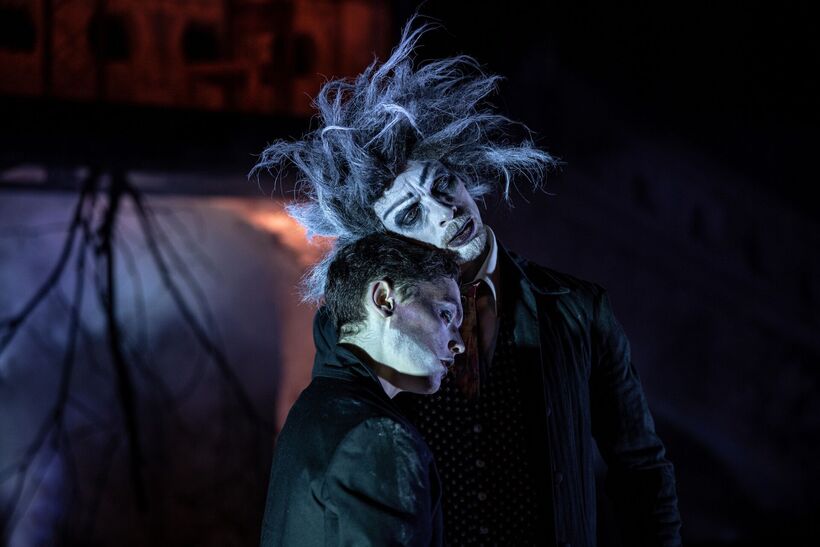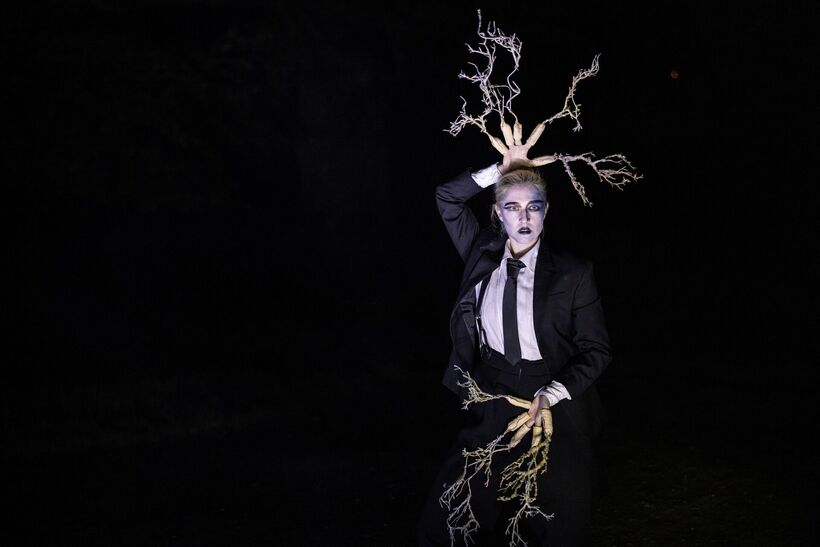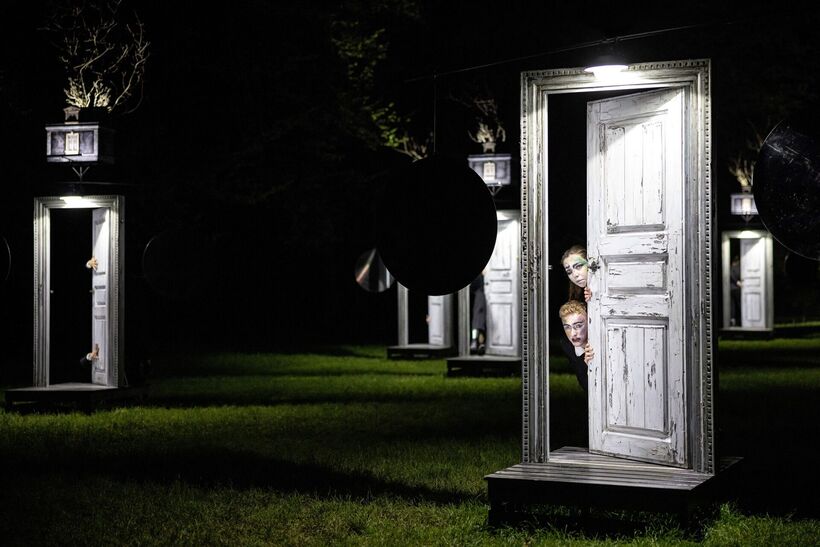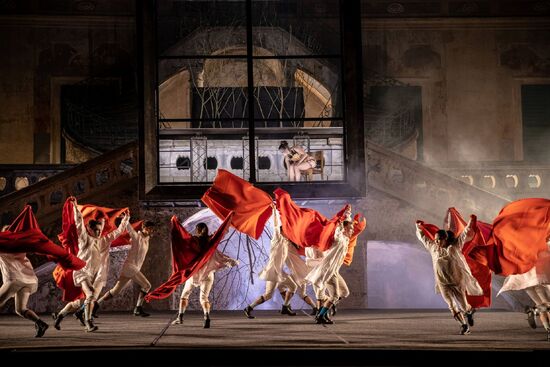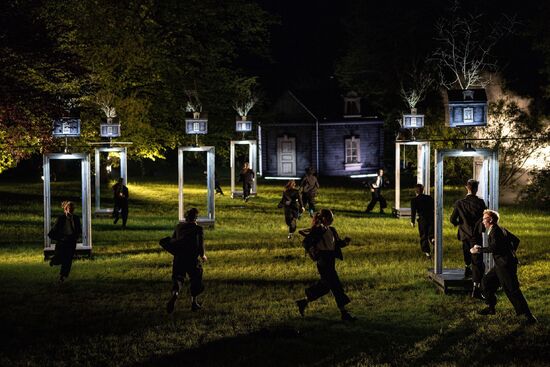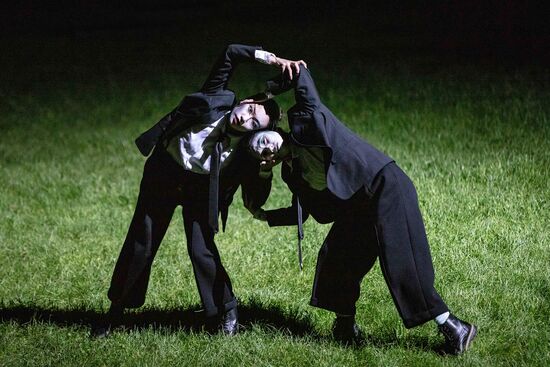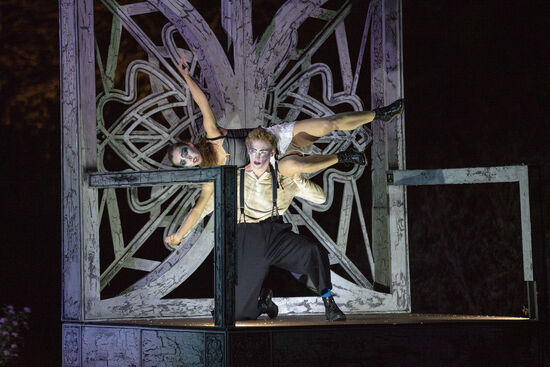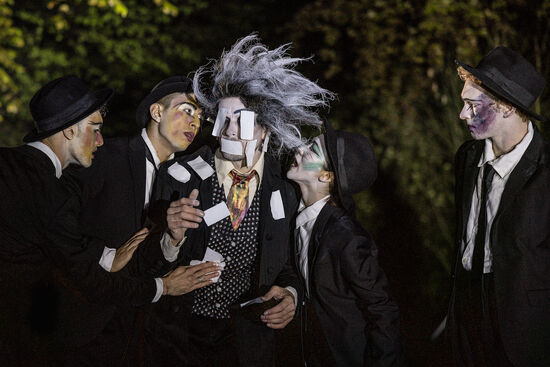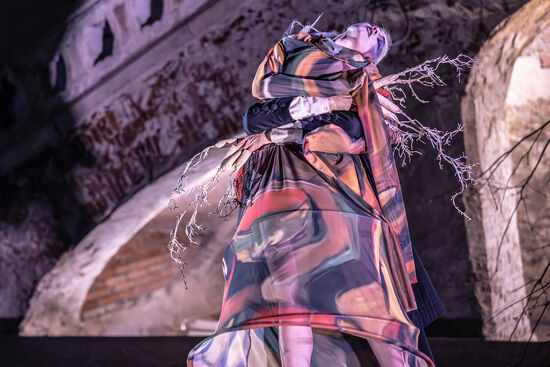A Lyrical Portrait of Egon Schiele
One of the leading representatives of European Expressionism, Egon Schiele (1890-1918), who, together with Gustav Klimt and Oskar Kokoschka, established a new era of painting in Vienna, died more than a century ago at the age of 28. He dedicated his work to the search for and depiction of beauty, which he found not only in the lines of the female body but also in the architecture and environment of Český Krumlov, his mother's birthplace, where he regularly went for inspiration. In the chateau gardens of the magical town on the Vltava River, his spirit was brought to life in a dance performance by Jan Kodet directed by the duo SKUTR.
Mature youth
Egon Schiele was sixteen when he arrived at the Academy of Fine Arts in Vienna and met conservative professors, rebellious classmates and new friends; he was sixteen when he apparently spent the first night with a woman. The production thus recapitulates roughly twelve years of a young man's blossoming, full of curiosity, longing, inspiration, searching, passion, courage, irrepressibility and sadness, disappointment and melancholy.
The spirit of the painter who will accompany us with his paintings comes clearly from another world. He appears in period black clothes with a tie but with a white death mask and a grey, extravagantly dishevelled wig. He revs up the time machine, and the auditorium is jolted back many decades to the time of his youth. Under the successful costume by the masterful artist Simona Rybáková, the tired soul of the young man emerges, to whom Zdeněk Mládek, a long-time soloist and now ballet master of the South Bohemian Ballet, has lent his infinite acting talent and charm. At times the character seems like a teenage schoolboy tempting the devil and playing with the fates of others, at others like a naive lover and a bitter artist. It is clear that, like a true romantic hero, he combines poetry with tragedy and pleasure with death. But in many moments, he comes across as fresh, enthusiastic and energetic, an exaggeration of himself, his body his puppet. Mládek himself seems to have brightened up beneath his seemingly sad mask and once again proves his complex dancing and acting mastery.
The audience sits on a moving carousel, in front of which various moments and fragments of memories appear, only to be taken away from them again - like unfinished lines where the mood permeates the senses but is hard to name. What binds the narrative is not story or chronology, but the poignant confession of the feelings of a lifetime.
The other fourteen members of the ballet company appear in various costumes and roles throughout the evening, but gradually it dawns on me that they are all Egon Schiele – his faces, images or fantasies, pieces of his soul, heart, and memories. Jan Kodet is once again inventive, able to captivate with creative choreography without the segments losing their fluidity or becoming boringly predictable. The movement shapes illustrate the musical pattern, and in each passage, they speak a slightly different language that conveys the period and the state of mind of the main character. Kodet makes great use of unconventional spaces without overwhelming them with superfluous movements. And the dancers undoubtedly understand his intentions – at first glance, they are a well-knit team and do not relinquish their commitment. The performers' bodies double, multiply and intertwine – images of lovers and friends are forever imprinted back into the painter's gaze. The dance finds itself in the main role rather unintentionally, blending perfectly with the other components, able to speak but also to remain silent. It is at its most impressive in the dynamic sections of youth, escape and mirroring, when the dancers truly command the audience's attention with their limbs. Conversely, the opening duets on huge chairs felt a little clumsy, which is understandable – the brief to perform amorous emotion on a miniature slippery surface three metres off the ground is not exactly the most receptive to the art of dance. The spatial limit and the necessary caution automatically limit the emotional expression of the performers – especially since the chairs themselves don't serve much other purpose in the entire production.
The whisper of trees
"I want to see the trees snapping in the wild wind, to look with wonder at the rotten fruit of gardens, to listen to the birch groves and the quivering leaves," Schiele wrote in a letter to his friend. The enchanting nature of the Šumava region recharged the painter and gave him back the necessary peace. As a symbol of his connection with the landscape, the artists chose dry branches, which completed all the elements of the captivating scene. Set designer Martin Chocholoušek used them to decorate the stage, street lamps, mock-up houses, a cart and the narrator's hands. The dead tree branches remind us of the transience of life and draw their own story in the spotlight cones. We find ourselves in the magical arms of the elves... and when the wind blew a misty haze, or it began to drizzle gently during the evening, one didn't even want to rustle the capes in the auditorium, that captivating was the moving play of lights in nature. Light designer Karel Karlos Šimek could not have wished for better weather – the already elaborate lighting was elevated by the weather into magical images.
When I recall the streams of light, however, I inevitably think of Petr Kaláb's captivating, almost cinematically brooding (and sometimes curiously light) music, which accompanied the melancholic wind and playful raindrops. And although during the dramaturgical introduction, Lukáš Trpišovský spoke of the omnipresent death and the images were far from melancholy, the production is not gloomy and rather romantically celebrates the immortality of poets. The scene with the door behind the mirrored frame thus became for me the most powerful moment of the evening, as despite the many stimuli, at the same time the dance left room for the flow of my own thoughts. It set the stage perfectly for the final image of leaving. Its tender touch was spoiled by the perhaps a little redundant action of the crane operator à la "deus ex machina", which, almost parodically, together with the lit fires, brought us back from the heyday of modernism to the reminder of baroque kitsch.
Immortal eroticism
When one says Egon Schiele, most of us think of his nude paintings (rather than paintings of Krumlov’s rooftops). The apotheosis of the female body as an image of desire, passion and love accompanies Schiele's work and life. The scene devoted to eroticism is thus one of the most colourful, thoughtful, artistically perfect images in the show. Dance here gives way to theatre, and theatre sanctifies the ritual architecture of the scene. The actors maintain precise spacing, the melody does not deviate in any way from the given lines. The designers of sets, costumes, masks, hair and lights excel in their visions, and the experienced directors and choreographer enthusiastically follow them in grazing the shutters of photographers...
Instead of passion, we are served only a perfect yet artificial and stylised reflection of it. Maybe that's what this was all about all along? We find ourselves in the multiple dimensions of a surreal story, like a labyrinth of mirrors with an infinite number of reflections of ourselves. The narrator seems to be enchanted by his own image, as if in the grip of his own desires and fantasies. Eventually, he returns to seek peace and quiet in the endless woods.
Dance theatre celebrating Schiele on the Revolving Theatre of Český Krumlov is definitely a powerful experience. The excellent creative team together offers so many stimuli that everyone will find something for themselves, it won't let you grow bored or perceive the bad weather, and in the spirit of an actual calculated show, it brings more and more surprises. Thankfully, though, the likeable parts never slip into pandering, and the spectacular moments always retain their flair and hyperbole. And on the way home, you suddenly feel that Egon is your old friend, for his spirit can awaken the forgotten foolish youth of us all.
Written from the performance on August 6, 2023, at the Revolving Theatre Český Krumlov.
Egon Schiele – Self-Portrait
Libretto: Jan Kodet, SKUTR / Martin Kukučka, Lukáš Trpišovský
Choreography: Jan Kodet
Direction: SKUTR / Martin Kukučka, Lukáš Trpišovský
Music: Petr Kaláb
Set Design: Martin Chocholoušek
Costume Design: Simona Rybáková
Light Design: Karel Šimek
Choreographer assistants: Béla Kéri Nagy, Zdeněk Mládek, Vendula Poznarová




